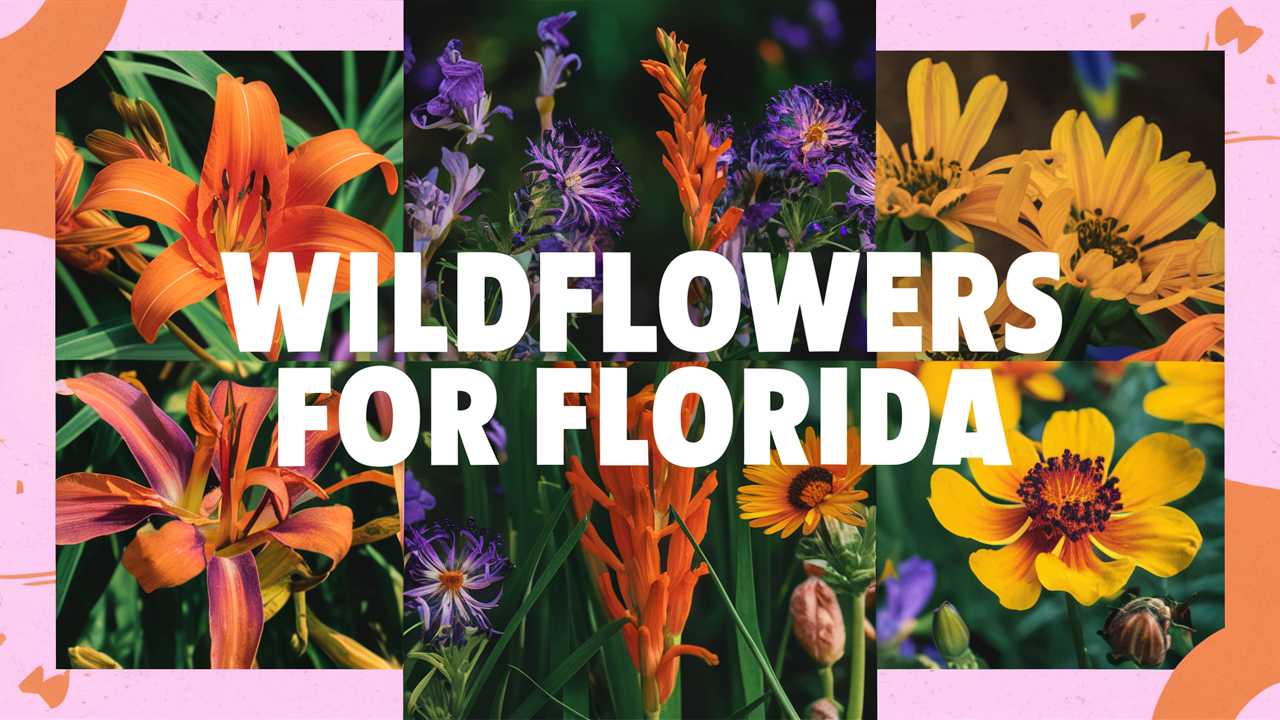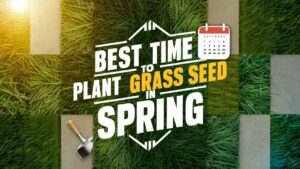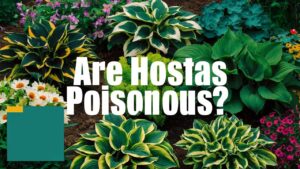Whether you’re a seasoned gardener, a nature enthusiast, or simply curious about Florida’s native flora, this guide will introduce you to some of the most fascinating wildflowers in the Sunshine State.
Butterfly Milkweed (Asclepias tuberosa)

Another member of the milkweed family, Butterfly Milkweed, showcases vibrant orange blooms that are a magnet for butterflies, particularly the iconic Monarch. This perennial plant prefers well-drained soil and full sun, making it a perfect choice for home gardens or prairie-style landscapes.
Beyond its ornamental value, Butterfly Milkweed is invaluable for pollinators. Its nectar-rich flowers provide sustenance for a wide array of butterflies and bees, creating a lively ecosystem wherever it grows. Furthermore, its deep taproot allows it to withstand drought, making it a resilient addition to any Florida garden.
Florida paintbrush (Carphephorus corymbosus)
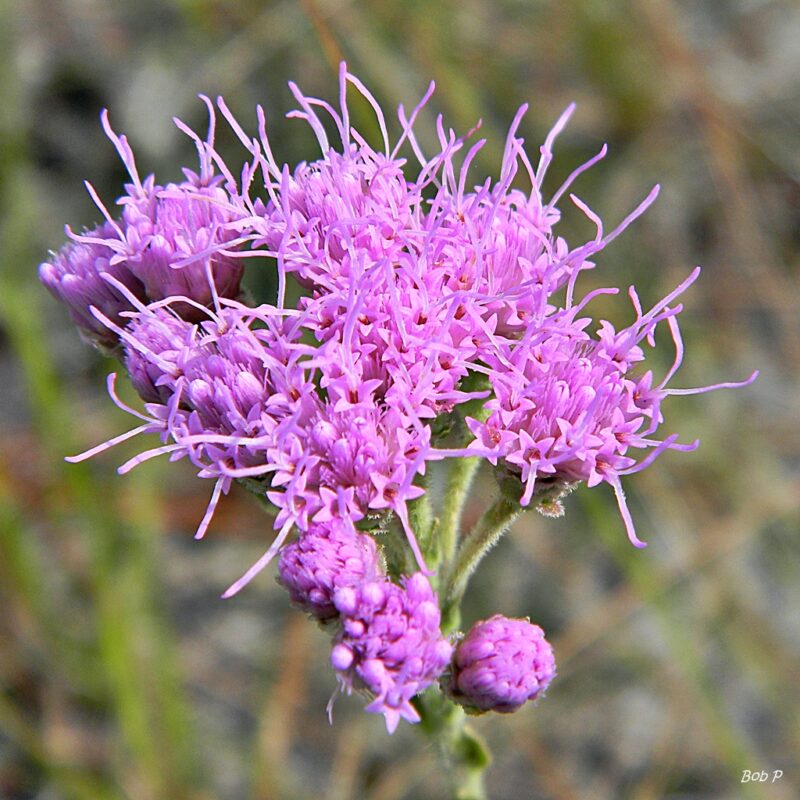
The Florida Paintbrush is an enchanting wildflower that boasts bright red, tube-like flowers, giving it the appearance of a painter’s brush. This endemic species thrives in sandy soils and often blooms in the spring, creating a striking contrast against the green backdrop of Florida’s natural landscapes.
This plant is particularly important for its ecological role; it’s a nectar source for hummingbirds and various insect pollinators. Its unique morphology aids in attracting these species, ensuring that the genetic viability of both the Paintbrush and its pollinators remains intact. Planting Florida Paintbrush can contribute to the conservation of local wildlife while adding a splash of color to your garden.
Lanceleaf Tickseed (Coreopsis lanceolata)
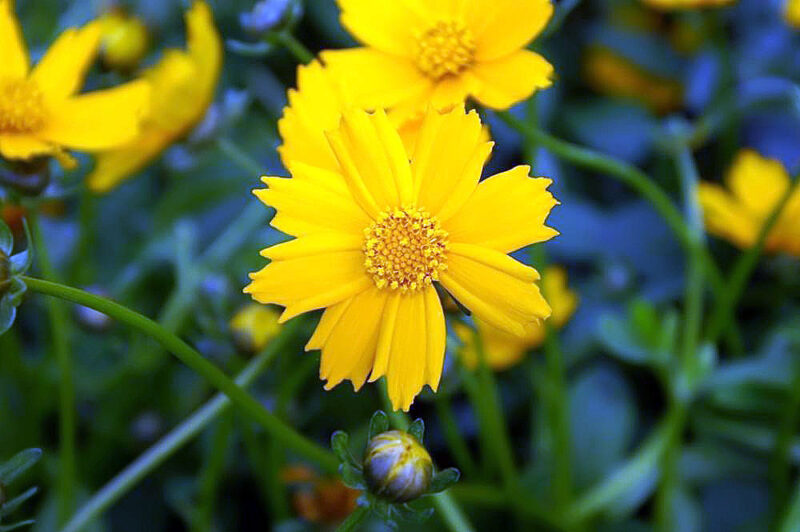
Recognized for its bright yellow blossoms, Lanceleaf Tickseed is a must-have for any wildflower enthusiast. This cheerful flower blooms from spring to late summer, spreading its sunny disposition across roadsides and open fields in Florida. Its slender leaves and bright blooms provide a lovely contrast that is sure to catch the eye.
As a member of the Coreopsis family, Lanceleaf Tickseed is not only visually appealing but also serves as a great nectar source for bees and butterflies. It is drought-tolerant and thrives in sandy, well-drained soils, making it an excellent choice for xeriscaping, where water conservation is a priority. Including this wildflower in your landscape can enrich your garden’s ecological health while celebrating Florida’s natural beauty.
Purple Coneflower (Echinacea purpurea)
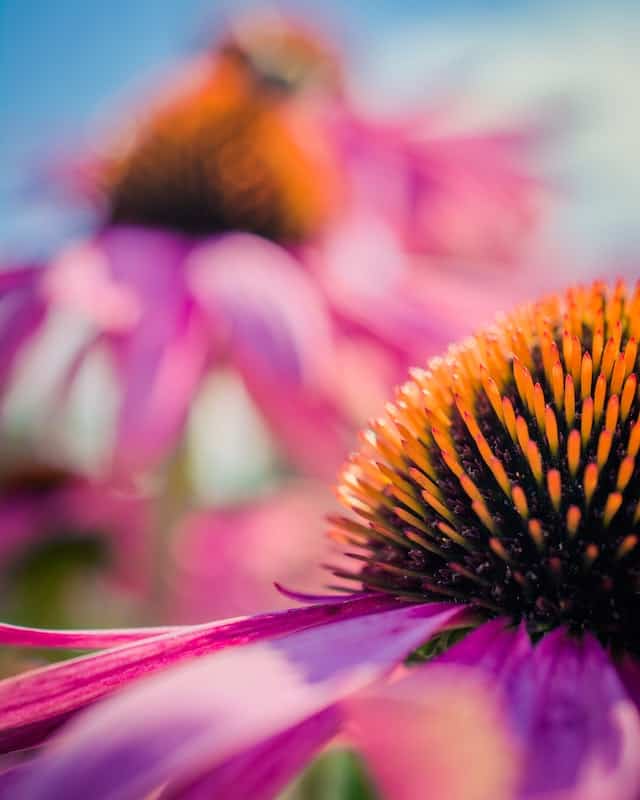
Known for its distinctive purple petals and prominent central cone, the Purple Coneflower is a beloved perennial. Often found in meadows and open woods, it blooms from mid-summer to fall, providing a late season source of nectar for pollinators. Its tall stature, reaching up to 4 feet, adds height and drama to garden beds.
Aside from its aesthetic appeal, the Purple Coneflower is recognized for its medicinal properties, commonly used in herbal remedies to boost the immune system. This multifaceted flower not only enhances your garden but also encourages wildlife, making it a fantastic addition for anyone interested in supporting local ecosystems.
Coastal Mock Vervain (Glandularia maritima)
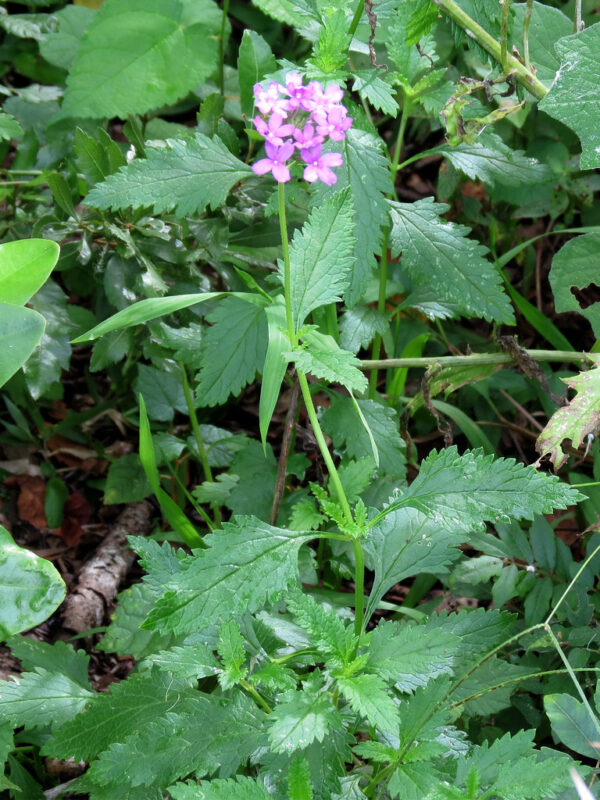
A lesser-known gem, Coastal Mock Vervain thrives in sandy coastal habitats and roadways. This perennial wildflower features clusters of small purple flowers, which bloom in the summer. It adds beauty to dunes and coastal landscapes while being resilient against saltwater and wind.
Coastal Mock Vervain is particularly attractive to butterflies, including Gulf Fritillary and Zebra Longwing, who flock to its nectar-rich blooms. Planting this wildflower in coastal gardens can help stabilize dunes and provide foraging resources for local wildlife, fostering a vibrant habitat that reflects Florida’s natural coastal beauty.
Dune Sunflower (Helianthus debilis)
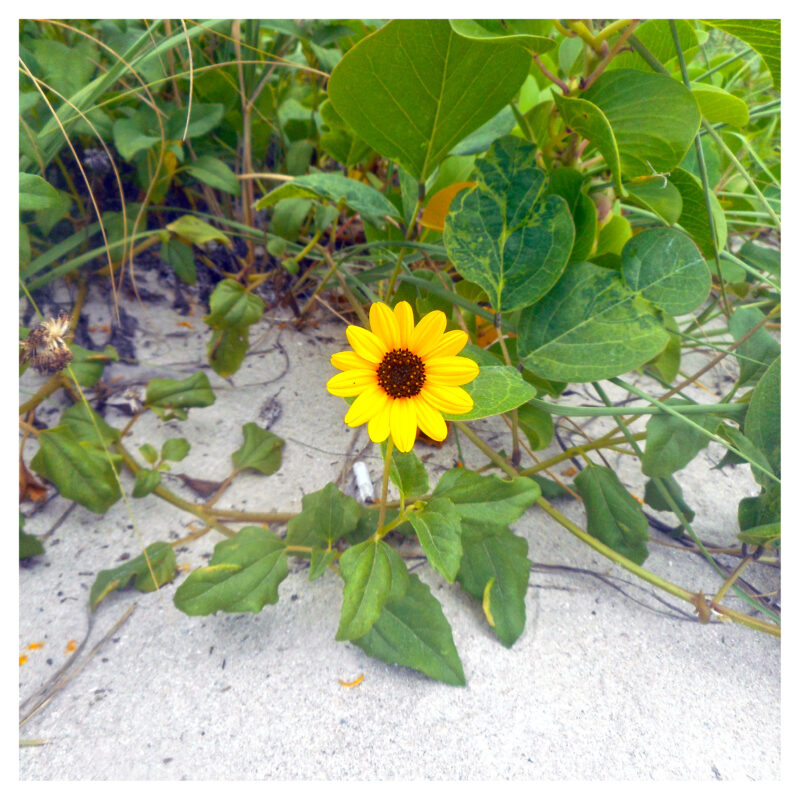
The Dune Sunflower is a vibrant and hardy wildflower that flourishes in sandy soils along coastal dunes. With bright yellow petals that mimic the sun’s rays, this sunflower can create stunning displays in the landscape. Found from North Florida to South Florida, it blooms year-round, making it a reliable and colorful addition to gardens.
This wildflower is not only visually appealing but also plays a crucial role in supporting coastal ecosystems by helping to stabilize sand dunes. Dune Sunflower attracts an array of pollinators, ensuring that it plays a role in maintaining the health of local flora and fauna. It offers a low-maintenance option for gardeners looking to beautify their spaces while supporting the environment.
Scarlet Swamp Hibiscus (Hibiscus coccineus)
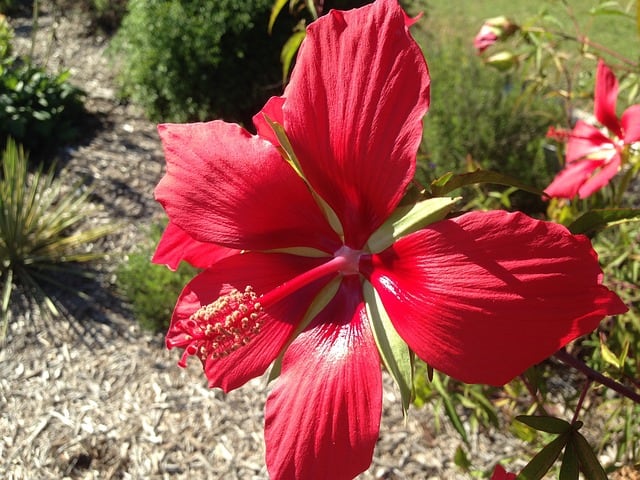
The Scarlet Swamp Hibiscus is a striking species that showcases vivid red flowers, often compared to delicate, large hibiscus blossoms. This plant is well-suited to wetland areas and thrives in shallow water or moist soils. Its height, often reaching 5 to 7 feet, makes it a dramatic focal point for any garden.
Known for its ability to attract a variety of pollinators, this wildflower is essential for fostering biodiversity in wetland habitats. Not only is it beautiful, but it serves as a vital resource for bees, butterflies, and hummingbirds during their foraging activities, enhancing the overall health of your garden ecosystem.
Wild Blue Phlox (Phlox divaricata)

Wild Blue Phlox brings a touch of tranquility to Florida’s natural landscapes. This perennial is characterized by its delicate clusters of pale blue flowers, blooming profusely in spring. It is often found in shady woodland areas, thriving in moist, well-drained soils.
In addition to its beauty, Wild Blue Phlox acts as a critical nectar source for early spring pollinators. By planting this wildflower, gardeners can support the lifecycle of many beneficial species that depend on its resources. Its subtle hues can soften the edges in a mixed planting scheme, making it an ideal choice for gardeners aiming to create a serene atmosphere.
Black-Eyed Susan (Rudbeckia hirta)
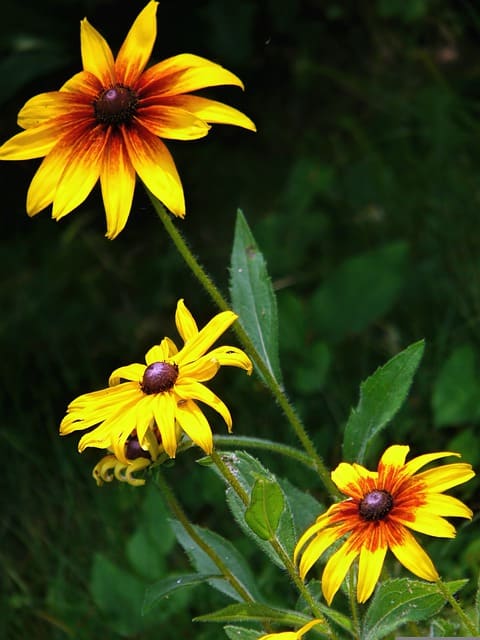
The Black-Eyed Susan is a classic wildflower that features bright yellow petals surrounding a dark center, creating a cheerful display. This resilient perennial flourishes in various habitats, from fields to roadside edges, and blooms in the summer months.
One of the most appealing aspects of Black-Eyed Susans is their ability to adapt to a range of soil types and conditions, making them perfect for novice gardeners. Not only do they beautify landscapes, but they also play a crucial role in attracting bees, butterflies, and birds, harmonizing the garden while fostering an inviting habitat for wildlife.
Tropical Sage (Salvia coccinea)
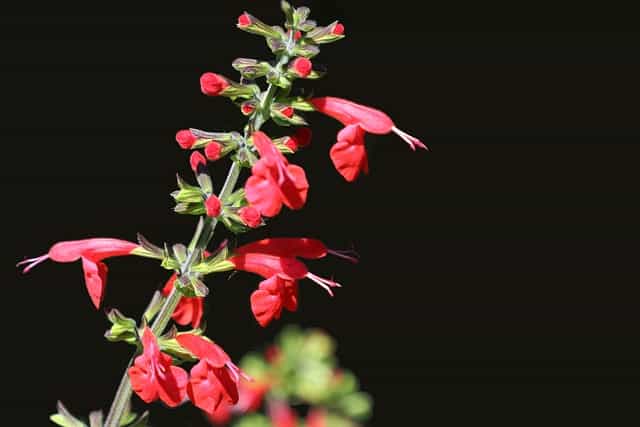
Tropical Sage is a perennial herbaceous plant with vibrant red, pink, or white tubular flowers that attract hummingbirds and butterflies. Preferring sunny spots and well-drained soil, it can thrive in a variety of garden settings, making it a popular choice for gardeners seeking to attract wildlife.
In addition to its ornamental value, Tropical Sage is drought-resistant, making it an eco-friendly option for gardens aiming to conserve water. Its long blooming period, from spring through fall, ensures that vibrant colors persist throughout much of the growing season. Adding this wildflower to your garden not only enhances beauty but supports essential pollinators.
Seaside Goldenrod (Solidago sempervirens)
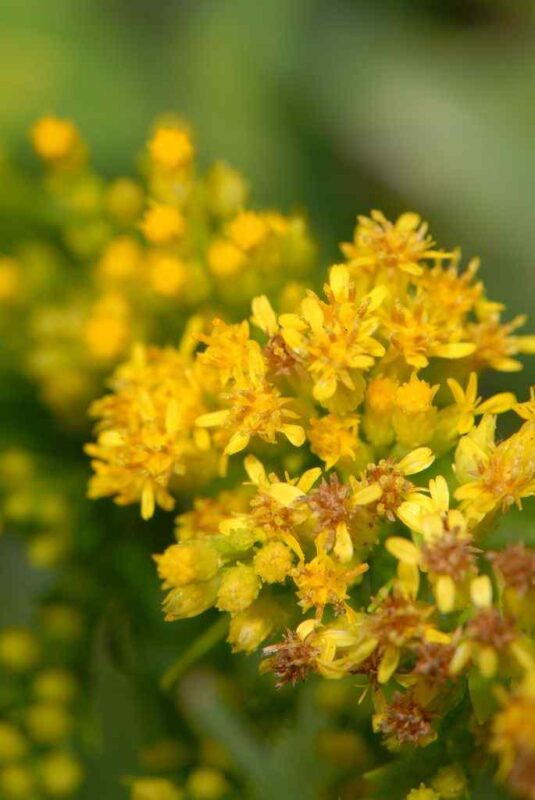
Seaside Goldenrod is a robust wildflower that flourishes in coastal habitats, including dunes, marshes, and sandbars. This perennial produces dense clusters of small, yellow flowers in late summer to fall, creating stunning displays that attract bees, butterflies, and other pollinators.
Beyond its beauty, Seaside Goldenrod plays a vital ecological role, providing cover and food for wildlife and stabilizing sandy soils. This adaptability makes it an excellent choice for coastal restoration projects and home landscapes alike. Its golden hues form a beautiful contrast with the blue of the ocean, celebrating Florida’s unique coastal ecosystems.
Blue Porterweed (Stachytarpheta jamaicensis)

Blue Porterweed is recognized for its beautiful violet-blue flowers that bloom year-round in Florida’s warm climate. This perennial thrives in sunny, dry locations and can often be found in disturbed lands and along roadsides. It’s a magnet for butterflies and provides nectar throughout the seasons, making it an excellent choice for butterfly gardens.
Notably, Blue Porterweed is also a great soil stabilizer, preventing erosion in sandy environments. Its understated beauty, combined with its ecological contributions, makes it a fantastic addition to any garden aspiring to attract pollinators while improving soil health.
Spiderwort (Tradescantia ohiensis)
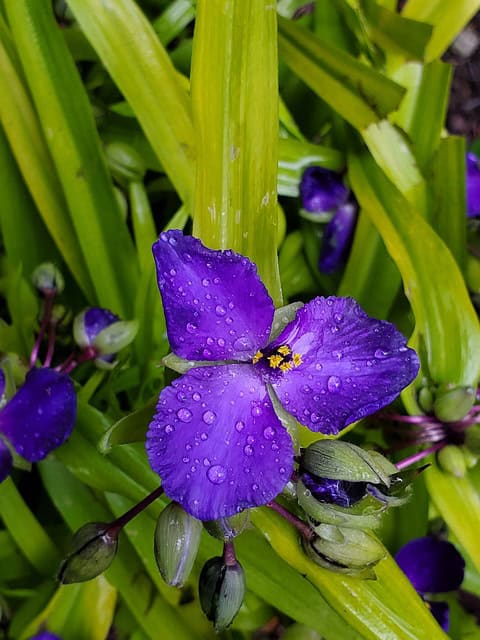
Spiderwort is an appealing perennial that captivates with its unique blossoms, characterized by three-petaled flowers that range from blue to purple. This wildflower thrives in moist, rich soils and is often found in meadows and along riverbanks.
Spiderwort is notable for its adaptability; it can flourish in various light conditions, from full sun to partial shade. It’s a valuable wildflower for gardens looking to support a diverse array of insect life, as it attracts bees and butterflies with its nectar-rich flowers. Its vibrant colors and lush foliage add depth to gardens and natural areas, making it a worthwhile choice for gardeners all over Florida.
Swamp Milkweed (Asclepias incarnata)
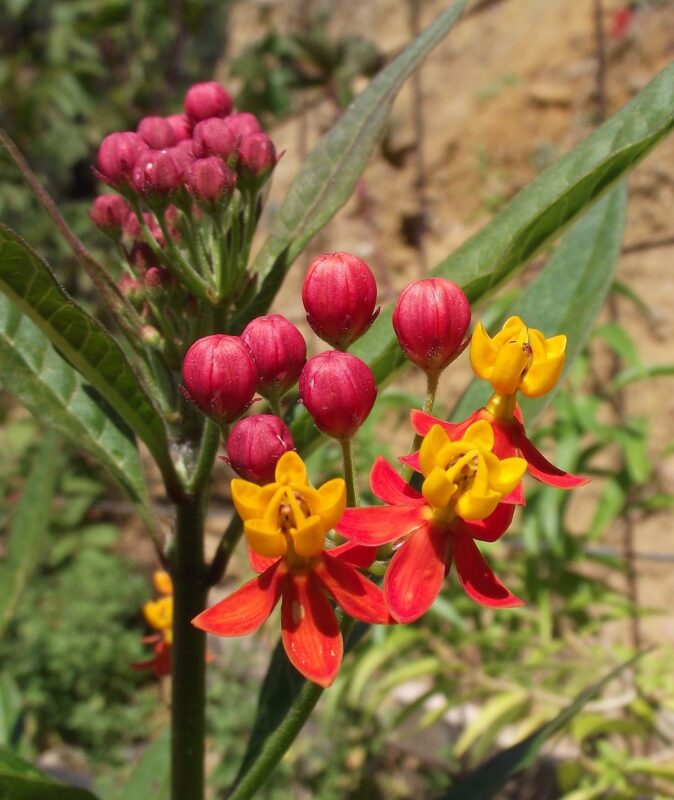
Swamp Milkweed is a striking perennial native to Florida’s wetlands and marshes. This plant typically grows between 3 to 4 feet tall and produces clusters of fragrant pink flowers that attract a multitude of pollinators, particularly butterflies. It’s an important host plant for the Monarch butterfly, providing breeding grounds and sustenance for its larvae.
In addition to its ecological benefits, Swamp Milkweed is quite hardy. It thrives in consistently moist soil, making it ideal for rain gardens, bog gardens, or any wetland restoration efforts. Not only does it add beauty to these spaces, but it also helps control erosion and improve water quality by filtering runoff.
Giant Ironweed (Vernonia gigantea)
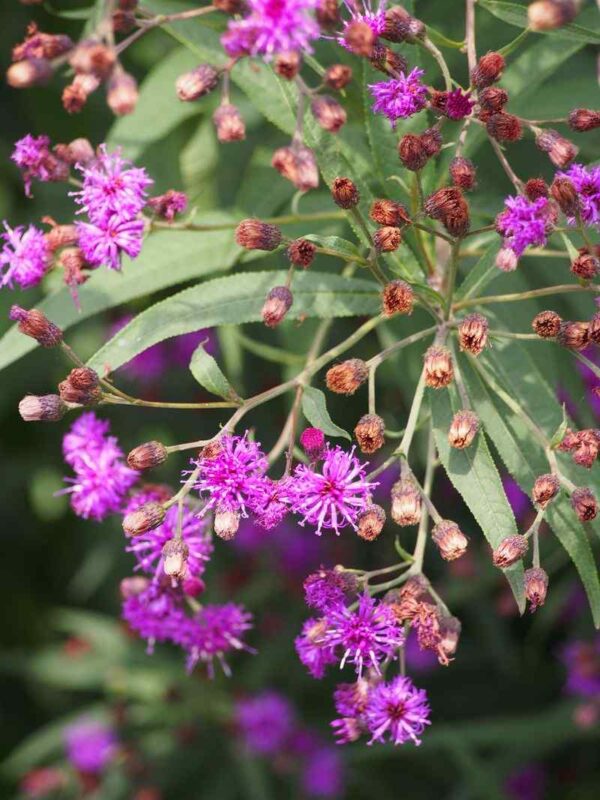
As its name suggests, Giant Ironweed is a robust wildflower that can reach heights of 6 to 10 feet, making it an imposing yet graceful presence in any landscape. This perennial features clusters of deep purple blooms that attract butterflies and other pollinators in late summer and fall.
Giant Ironweed is often found in wetlands, meadows, and along roadsides, adaptable to a variety of conditions but favoring moist, rich soils. Its tall stature and unique flowers make it a standout addition to any wildflower garden, contributing not only beauty but also vital habitat for pollinators during the late growing season.
Cherokee Bean (Erythrina herbacea)
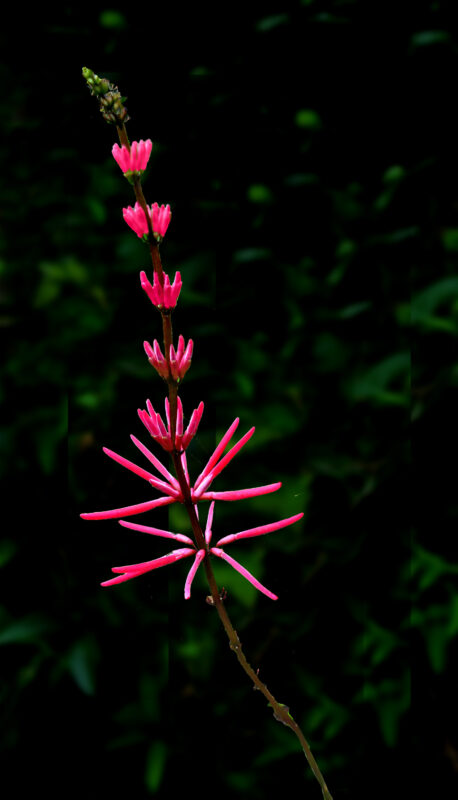
Cherokee Bean is a striking native shrub characterized by its red, tubular flowers that are highly attractive to hummingbirds and butterflies. This plant can be found in coastal regions and along riverbanks, establishing itself in well-drained soils.
This handsome shrub is also admired for its ornamental value. It creates a lovely display in gardens, while its seeds are of interest due to their historical use by Native Americans. The Cherokee Bean contributes to ecological diversity by supporting pollinators and adding structure to gardens and natural areas.
Firebush (Hamelia patens)
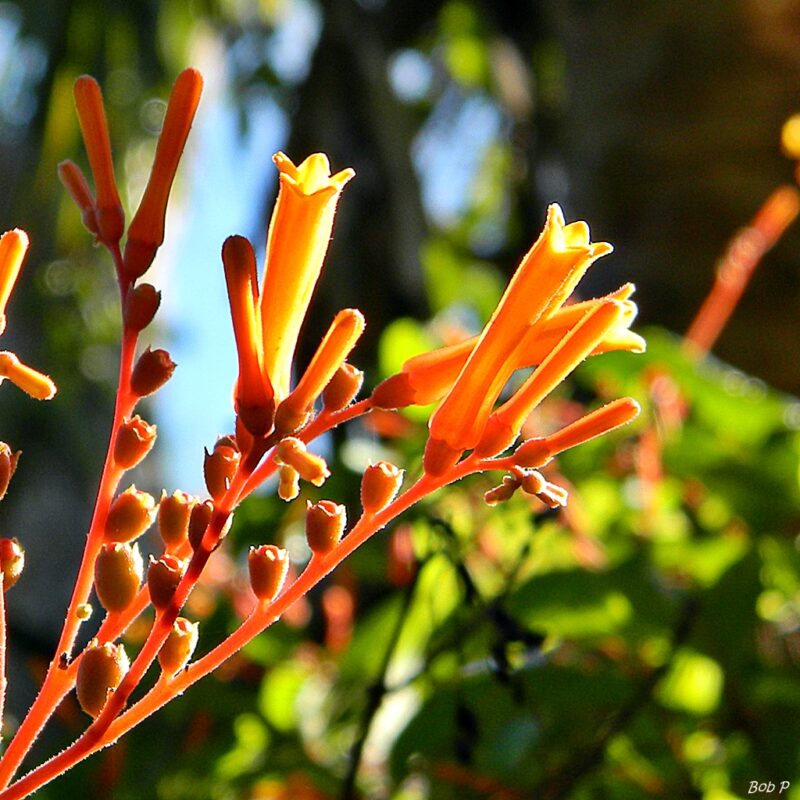
Firebush is a hardy shrub known for its tubular red and orange flowers that bloom throughout the warm months, making it a favorite among pollinators. It is a versatile plant that thrives in various soils and climates, whether in coastal areas or more inland settings.
Not only does Firebush provide nectar for hummingbirds, butterflies, and bees, it also draws beneficial predatory insects, fostering a balanced garden ecosystem. Its ability to attract wildlife while standing out with its vibrant blooms makes it an excellent choice for anyone looking to enhance their outdoor space.
Sweet Pinxter Azalea (Rhododendron canescens)
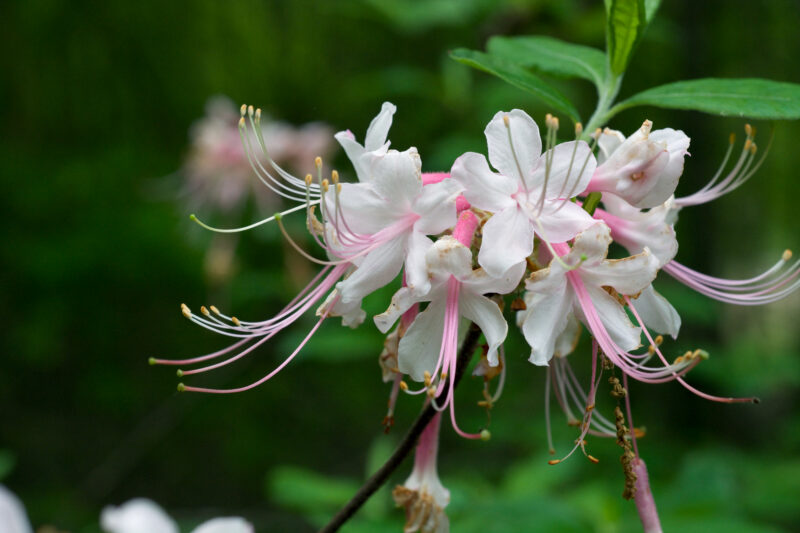
The Sweet Pinxter Azalea is a stunning shrub that blooms with fragrant clusters of pale pink flowers in the spring. This native azalea prefers moist, well-drained soils and partial shade, often found in wetland areas or under the canopies of trees.
Its beautiful flowers attract butterflies while its lush foliage provides shelter for various wildlife. Including Sweet Pinxter Azalea in your landscape not only enhances the beauty of your garden but creates a welcoming habitat for pollinators and other local fauna, allowing you to enjoy a slice of Florida’s natural charm.
Trumpet Creeper (Campsis radicans)
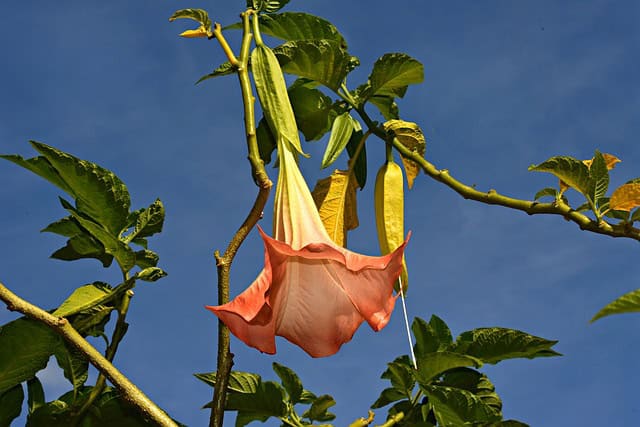
Trumpet Creeper is a vigorous, climbing vine known for its large, trumpet-shaped flowers that bloom in summer. The orange and red hues of the flowers attract hummingbirds and butterflies, making it a popular choice for butterfly gardens.
This plant excels in sunny environments and tolerant of poor soils, making it ideal for covering fences, trellises, and arbors. With its ability to draw pollinators, Trumpet Creeper not only beautifies your garden but also plays a direct role in supporting local ecosystems, truly embodying the spirit of Florida’s wildflower heritage.
Carolina Jessamine (Gelsemium sempervirens)

Carolina Jessamine is a perennial vine that brings a touch of the South to Floridian gardens. Known for its bright yellow, fragrant flowers, this plant typically blooms in spring, filling the air with a delightful scent. It climbs readily, often covering fences, walls, or arbors, making it a popular choice for providing vertical interest.
In addition to its ornamental appeal, Carolina Jessamine is a valuable nectar source for various pollinators. Its hardiness and drought tolerance make it a great choice for environmentally conscious gardeners seeking to attract butterflies and hummingbirds while complementing the natural beauty of their surroundings.
Coral Honeysuckle (Lonicera sempervirens)
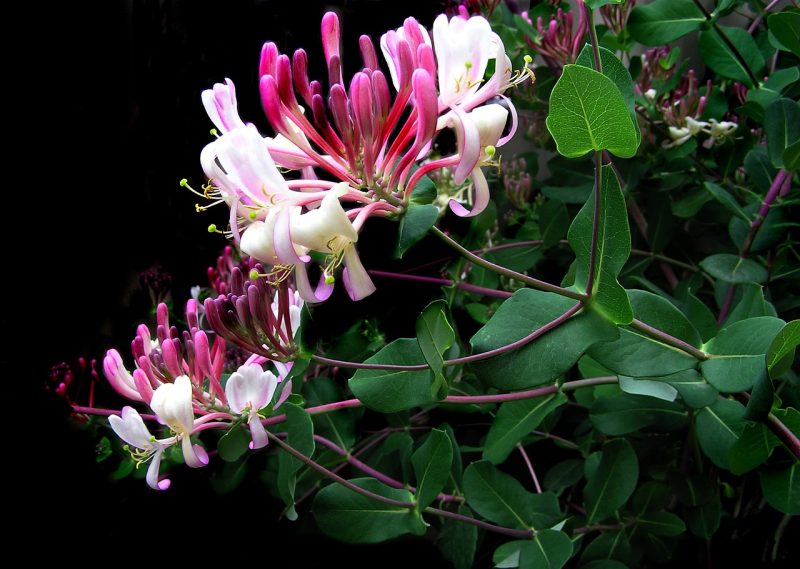
Coral Honeysuckle is a native vine characterized by its tubular, coral-red flowers that attract a plethora of hummingbirds, bees, and butterflies. This plant is easy to grow in well-drained soils and thrives in a range of sunlight conditions, from full sun to partial shade.
The beauty of Coral Honeysuckle lies not only in its vivid flowers but also in its role as a habitat and food source. It provides cover for birds and insects while adding stunning color to your garden. Whether you’re looking to create a wildlife-friendly space or simply enjoy vibrant blooms, Coral Honeysuckle is a perfect choice.
Gentian (Gentiana spp.)
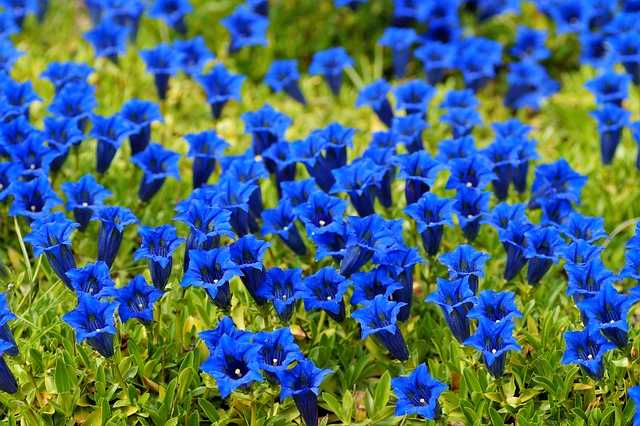
Gentians are known for their mysterious blue flowers, which are a rarity among native wildflowers. These perennials thrive in moist, well-drained soils, often found in shady wooded areas. Their striking flowers usually bloom in late summer to early fall, providing a unique late-season attraction for pollinators.
While Gentians can be more elusive to find in the wild, cultivating them in your garden can be rewarding. Their captivating blooms add depth and interest to drab patches of shade, creating a lovely contrast among the softer hues of other plants. They symbolize the beauty of Florida’s diverse ecosystems, highlighting the importance of conserving these native species.
Indian Paintbrush (Castilleja spp.)

The Indian Paintbrush is a captivating wildflower known for its bright red and orange bracts that resemble a painter’s brushstroke. These unique flowers often bloom among grasses and are prevalent in open fields and savannas. Their vibrant colors announce spring’s arrival and provide astonishing contrast against the green landscape.
This wildflower is a hemiparasite, meaning it can obtain some nutrients from surrounding plants, allowing it to thrive even in nutrient-poor soils. By attracting various pollinators, Indian Paintbrush plays an essential role in maintaining biodiversity, making it a valuable addition to any wildflower garden.
Larkspur (Delphinium spp.)
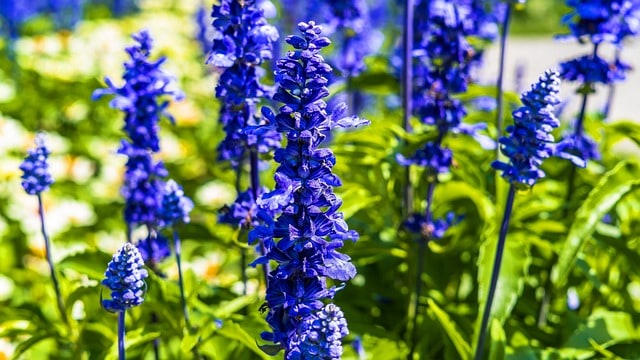
Larkspur is a stunning group of wildflowers characterized by their tall spires adorned with small, colorful flowers, often in shades of blue, purple, or white. These biennials prefer open meadows and well-drained soils, with blooming occurring in spring and early summer.
Larkspur flowers attract bees and butterflies, offering essential nectar while enhancing the beauty of gardens and natural landscapes. While they are mostly biennial, they can self-seed and become a perennial feature, making them a reliable choice for adding vertical interest and a burst of color to your garden.
Nightshade (Solanum spp.)
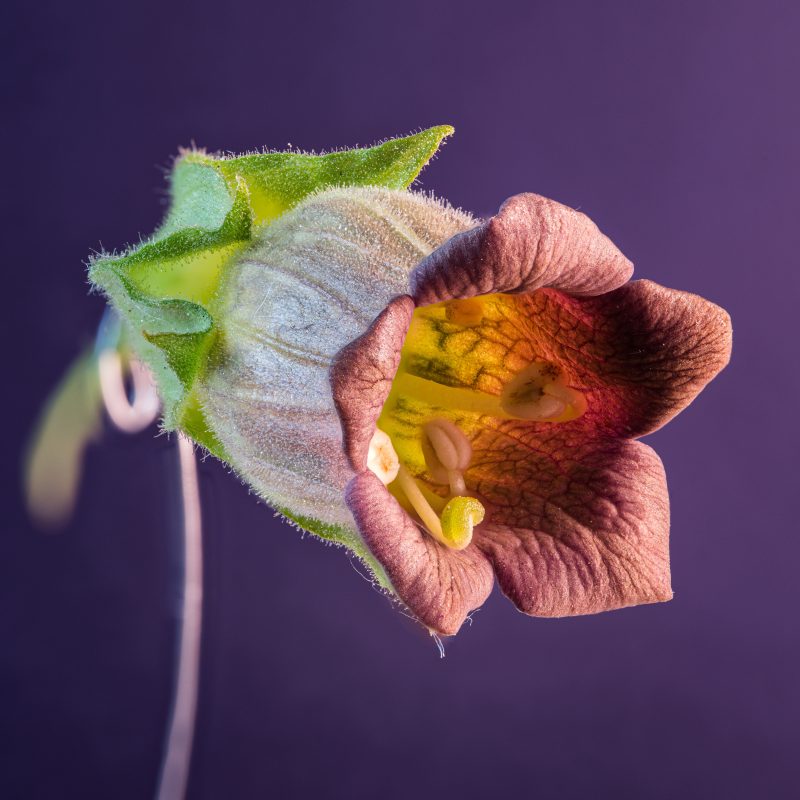
Nightshade represents a diverse family of plants that exhibit beautiful, delicate flowers in various forms, stemming from both annual and perennial varieties. Commonly found in disturbed areas and woodlands in Florida, nightshade flowers can be white, purple, or yellow, depending on the species.
Nightshade plants play a crucial role in ecosystems, providing food for insects and birds. Some species produce berries that serve as an important food source for various animals. While they may be toxic in some forms, they are essential for balanced ecosystems, demonstrating the beauty and complexity of Florida’s native flora.


